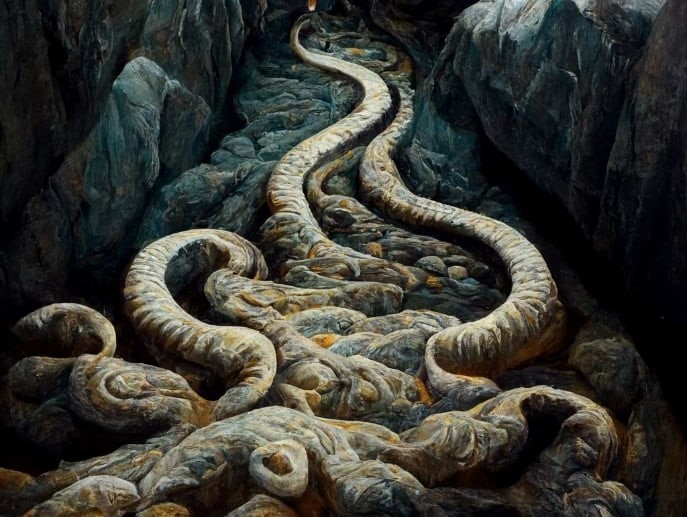
The projects implemented under the Cross-border Cooperation Programme Poland-Belarus-Ukraine 2014-2020 are not just indicators, budgets, reports and payments. Although these are inseparable elements, above all each project hides the specific ideas, values and dreams of people implementing it, as well as the stories of those who benefited from their implementation.
We want to bring some of them closer to you by the "Project stories" – the cycle which presents their more human (but also animal – as in the 1st, 13th and 14th episodes) dimension of our selected projects. We invite you to read!
![]()
Once upon a time, a dreadful dragon terrorized the plains around Boryslav. It tormented the local people, devoured those unfortunate enough to catch its eye, and destroyed their homes. No one could defeat the dragon until a brave knight arrived, determined to restore justice. Seeking advice from ancient sages, the knight learned that while it was impossible to kill the beast, it could be put to sleep with a special potion. The knight gathered the necessary herbs and successfully put the dragon into a deep slumber. The dragon never awoke. Over time, its body was covered with soil, and forests grew over it. As years passed, it turned into the mountains we know as the Carpathians. With the passing of time, the dragon’s sense of guilt for the wrongs done grew within him. As it was sleeping, salty tears flew from its eyes, which became the salty springs and rivers in the region. Its blood turned into a black, stinky substance. The knight did not find happiness either. On his return, he found his house destroyed. In his grief and despair, he turned into a stone mountain, now known as Tomyna (“Toma’s Mountain”), located in Boryslav, Lviv Oblast. To this day, the local people have made use of the salt springs and oil deposits in the area.
This legend was featured in a quiz titled “The Secrets of Boryslav Salt,” organized as part of the SaltyHistory project. Participants faced various tasks related to the history of salt production in Boryslav. For each completed task, a team received a puzzle piece, and by the end of the competition, they had to assemble their whole puzzle. The event was a significant one, with over 150 children from schools in Boryslav and nearby villages participating, making the competition quite intense! It was also a fun event, and no one left without a prize.
Such activities are so valuable for today’s children, they absolutely need to engage in something interactive and emotionally stimulating to plunge out the virtual word… We are aware that children should know more about the history of their small homeland but if we just add another lesson in the curriculum or take them to a museum it would be boring for them… During the quest they learned so many new things by exploring and solving tasks I didn’t expect them to ask “When is the next quest?” on the bus home. – Lydia, a History teacher from Boryslav, shares her thoughts about the event.
But is the dragon story true?
Albertyna Buchynska, the project coordinator and professional geologist, addresses this question:
There is one remarkable aspect about the story which makes it valid – the past defines the present and what is underneath sometimes defines what is above.
Indeed, since the Bronze Age, salt deposits have influenced human settlement in the area, contributing to the rise of cities and trade routes that would otherwise not have existed. For example, Tyrava Solna in Poland and Boryslav (along with Drohobych and Stebnyk) became notable for their salty springs, trading salt with other countries during the Middle Ages. In the 19th and 20th centuries, oil, referred to as the dragon’s blood, became more significant for Boryslav. The healing ‘salty’ waters led to the development of spa resorts such as Truskavets and Skhidnytsia in the 19th century. Drohobych remains closely associated with saltBut what about more recent history?
Old people still remember how salt helped them to survive scarce years of WWII as it was a product which could be traded for food in other parts of the country. A man would take a bag of salt to other places and come back with flour. - says Abertyna.
Even though salt production was not large-scale at that time, it remained crucial. Overall, mineral deposits have defined the urban character of these areas, creating a dense urban agglomeration in Drohobych, Boryslav, Stebnyk, and Truskavets.
The SaltyHistory project aimed to highlight this history. The salty spring in Tyrava Solna is recognized as a heritage site, and the springs in Boryslav are also worth visiting. As part of the project, a tourist information site was established near a salt spring in Tustanovychi, a district of Boryslav. Thanks to the project, the spring is now enclosed by a fence and complemented by amenities such as bicycle parking and a gazebo. An information stand provides details about the history of salt production in the area.
Additionally, there are many other remarkable places to visit on both sides of the border and many stories to uncover.
You can read more in the book "The History Seasoned with Salt", published as part of the project and watch the movie:
 Stories Seasoned with Salt - PL
Stories Seasoned with Salt - PL
 Stories Seasoned with Salt - PL + sign language
Stories Seasoned with Salt - PL + sign language
 Stories Seasoned with Salt - lector UA
Stories Seasoned with Salt - lector UA
 Stories Seasoned with Salt - subtitles UA
Stories Seasoned with Salt - subtitles UA
More about the SaltyHistory project can be found here.
Was this page useful?


